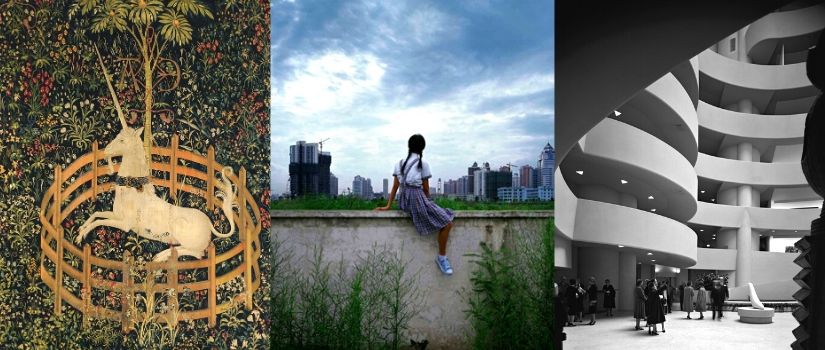Bachelor of Arts (B.A.)
A B.A. in Art History gives students a broad knowledge of art and the cultures that generate it. Students develop skills in theory, research, analysis, and criticism. In this program, students learn to research and discuss artworks, movements, and periods in art history, and apply art historical methodologies to their study.
Our art history faculty teach courses in areas such as Renaissance and Baroque art
and architecture, 18th-century to contemporary European art and architecture, American
art and architecture, African American art, modern Chinese art, and photographic and
film history.
2024-2025 B.A. in Art History Curriculum and Requirements
Minor in Art History
Students enrolled in an undergraduate degree program at USC can easily pursue a minor in art history. In this minor, students take 18 credit hours of coursework across periods and cultures in the history of art. All students pursuing a minor may take more than 18 credit hours.
Students interested in completing an art history minor should speak to their undergraduate advisor.
Accelerated Master's Track in Art History
Earn graduate degree credit while enrolled as an undergraduate
If you are a current undergraduate student and have 90 credits and a 3.4 GPA, you may be able to take up to 12 credits towards a Master's degree while you’re still an undergraduate student. Participating in the accelerated Master's program is a separate process from applying to graduate school, and it does not guarantee admission to graduate school. However, accelerated Master’s students who apply to graduate school at USC and are accepted are able to start the M.A. in Art History with up to 12 credits already completed. These students complete their graduate coursework earlier, saving time and tuition.
Students who are interested in the accelerated Master’s track in art history should speak to their undergraduate advisor.
Your Future in Art History
A degree in art history opens doors to many career options. Graduates with a B.A. or M.A. in Art History generally pursue careers in gallery or museum administration, teaching, or working within artistic, cultural, and historical institutions. Some art history majors may continue onto graduate school for a Ph.D. and become university professors or museum curators. Others may put the critical and analytical training they acquired in art history to good use by continuing their education with advanced degrees in other fields, such as law or business.
Alumni of the University of South Carolina’s Art History program have gone on to hold successful careers in a number of fields, including:
* Executive Director at the Frist Center for the Visual Arts
* Deputy Director at the Columbia Museum of Art
* Senior Curator at the Dallas Museum of Art
* Assistant Professor of Art History at Florida State University
* Gallery Manager and antiques dealer in New York City
* Self-employed Art Appraiser in Greenville, SC
* Interlibrary Loan Manager in the University of South Carolina Libraries
* Art Librarian at the University of Louisville
* Librarian at a public library in North Carolina
* Fulbright Scholar in Germany
* Adjunct Instructor at the State College of Florida
* Art Teacher at an international school in China
* PhD Candidate in Visual Communication
* Social Media Manager for an art investment company
* Assistant Registrar at The Chrysler Museum
* Programs Director at United Way of the Midlands
* Intern at Crawford Conservation in Lexington, SC
* Independent Curator in Paris
* Elementary School Teacher in Lexington, SC
* Curatorial Assistant at the National Museum of Wildlife Art
For more information about the many opportunities and career paths available to those with a degree in Art History, explore What Can I Do with This Major?
Core Faculty
- Lydia Brandt, Ph.D.
- Lana Burgess, Ph.D.
- Peter Chametzky, Ph.D.
- Brad Collins, Ph.D.
- Susan Felleman, Ph.D.
- Andrew Graciano, Ph.D.
- Abbe Schriber, Ph.D.
- Anna Swartwood House, Ph.D.
- Amanda Wangwright, Ph.D. (Area Coordinator)
